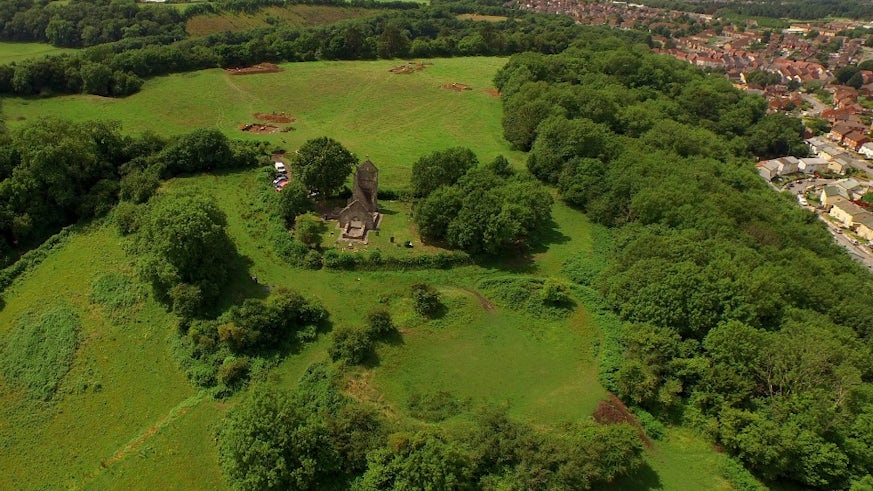Most compelling evidence yet of Cardiff’s 6,000-year-old origins
27 July 2015

A
major community excavation of one of Wales’s most significant Iron Age
hillforts has uncovered what Cardiff University archaeologists are calling the
“most compelling evidence yet” that the origins of Cardiff date back 6,000
years to the early Neolithic era (4,000 – 3,300 BC)
A four-week excavation of Caerau Hillfort on the western edge of Cardiff has
revealed a huge Neolithic causewayed enclosure – a monument the archaeologists
say is extremely rare, with just a handful of others known to exist in Wales.
The excavation of the site – which is more than 3 hectares in size – also
recovered the largest collection of early Neolithic pottery ever discovered in
Wales, as well as animal bones, polished stone axes, flint tools and a Roman
brooch.
The discoveries have come from the third season of excavation work at the
hillfort, offering remarkable evidence of Cardiff's Stone Age origins.
This year’s community dig involved more than 200 local volunteers, who worked alongside university archaeologists and were at the forefront of unearthing the latest finds. The month-long excavation also attracted around 2000 visitors from Caerau and Ely and the surrounding communities.
The CAER Heritage project is a collaboration between the University's School of History, Archaeology and Religion, community organisation Action Caerau and Ely (ACE) and local schools. The excavations form one part of the initiative, which aims to provide the community with deeper insight into their heritage and the area’s past, while also enabling them to gain new skills, build confidence and enhance community cohesion.
Dr Oliver Davis, CAER Heritage Project Director, from Cardiff University’s School of History, Archaeology and Religion, said: “Excavations in 2014 had indicated that there may have been Neolithic activity on the hill, but the sheer scale of the site and preservation of this year’s finds have surpassed our expectations and amazed the team, providing the most compelling evidence yet of the city's 6,000-year-old origins.
“This was unlikely to have been a settlement; rather a meeting place where some of the very first farmers of Wales would have gathered at certain times of the year to establish communal relationships, through activities including feasting, exchange and the performance of rituals”.
Dr Dave Wyatt, from the University’s School of History, Archaeology and Religion, added: "Once again, the communities that surround the hillfort have been at the heart of uncovering the incredible story of this site, which was once the power centre of the Cardiff region. This year the team’s ranks have been swelled by hundreds of local volunteers of all ages, as well as thousands of visitors. As ever, the talent and great warmth of the people of Caerau and Ely have shone throughout the dig.
“Each year, the finds keep coming, the people keep coming, and the CAER Heritage community keeps growing and getting stronger."